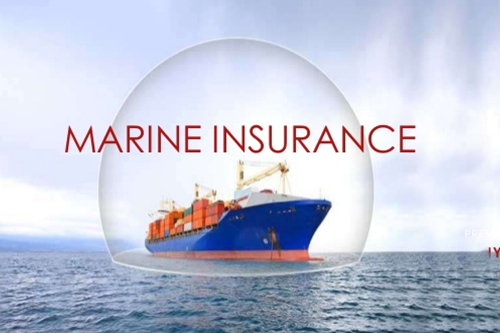 Marine insurance is important because in the movement of cargoes from point of supplier to destination of import, certain loses could be incurred. Such loses could range from disappearance, fire damage, storage or handling damage, water damage or road damage, etc. It does not matter whether the movement is by sea, air road or rail, insurance companies are there for both import and export coverage. Marine insurance is generally into three categories; institute cargo clauses A, B, and C.
Marine insurance is important because in the movement of cargoes from point of supplier to destination of import, certain loses could be incurred. Such loses could range from disappearance, fire damage, storage or handling damage, water damage or road damage, etc. It does not matter whether the movement is by sea, air road or rail, insurance companies are there for both import and export coverage. Marine insurance is generally into three categories; institute cargo clauses A, B, and C.
Table of Contents
ToggleFirst, let us give a brief overview of what each institute covers. Secondly, we shall focus on the cargo clause C that is the most commonly used. Thirdly, we shall suggest the best insurance companies with many years of experience in cargo coverage.
Recommended for you; FORM M IN NIGERIA; HOW TO PROCESS AND OBTAIN IT
MARINE INSURANCE: INSTITUTE CARGO CLAUSE “A”
Clause A covers “all risks” with specific exclusions. Such exemptions are:
- Purposeful misconduct
- Delays of any kind
- Trade haulage
- Packaging errors
- Nuclear risks
- Default of owners
- War risks
- Non road or sea worthiness
- Strike, riot or civil unrest
MARINE INSURANCE: INSTITUTE CARGO CLAUSE “B”
This covers only loss of or damage to the subject matter insured emanating from the understated – Otherwise called a named perils clause.
- Fire and explosion
- Vessel grounded, sunk or capsize
- Overturning or derailment of land conveyance
- Collision or contact of vessel, craft with any external object
- Discharge at port of distress
- Earthquake, volcano or lightning
- Jettison and washing over board.
- Entry of sea, lake or river water
- Total loss of any package overboard during loading or unloading
MARINE INSURANCE: INSTITUTE CARGO CLAUSES “C”
This is where we shall demonstrate an example using a standard rate from one of our insurance companies. Institute cargo clause C covers the followings:
- Fire and explosion
- Vessel grounded, sunk or capsize
- Overturning or derailment of land conveyance
- Collision or contact of vessel, craft with any external object
- Discharge at port of distress
- Total loss of any package overboard during loading or unloading
Institute cargo clause ‘C’ does not cover partial losses but would only cover goods to on total loss basis, this is the main difference between it and clauses A and B.
Some companies extend clauses A and B to include malicious damage, theft, pilferage, and no delivery based on agreed additional rates.
Read also; IMPORTATION OF GOODS; NEW IMPORTER’S GUIDE
CARGO INSURANCE PREMIUM FOR INSTITUTE CARGO CLAUSE C:
The premium paid to the insurance company for issuing marine certificate or insurance certificate to the importer is a function of the agreed premium rate. Each insurance company has its premium rate, which is an agreement with the importer.
Insurance Premium = [FOB + Freight + 10% (mark-up)]*Premium rate. No worry about this, an example will clarify the matter just keep reading.
Assuming an item of import has a total cost of 170,000EUR, and the transport from Europe to Apapa seaport is 7000, and assuming the AIICO Insurance Plc. is offering Insurance Premium Rate of 0.12%. What is the premium payable by the importer to AIICO Insurance Plc. under institute cargo clause C?
First, check what the exchange rate is (what is agreed), and convert to the Nigerian Currency. In this case, the agreed rate is 361.06
FOB = 170000*361.06 = 61380200
Freight cost = 7000X361.06 = 2527420
| INSURANCE PREMIUM | [61380200+ 2527420+ 10% (mark-up)]*0.12% | 84,358.06 |
| SUM INSURED | [61380200+ 2527420+ 10% (mark-up)] | 70,298,382 |
IN CONCLUSION:
Institute cargo clause C as we have seen costs next to nothing, hence most importers choose to use it. Vagmon can help you negotiate best premium rate. Furthermore, we convince insurance companies to grant you access to a link where you print insurances at the comfort of your office and reserve a duplicate for the Insurance Company. This makes your clearing process easy with less human interface.
Additionally, you can watch here:

